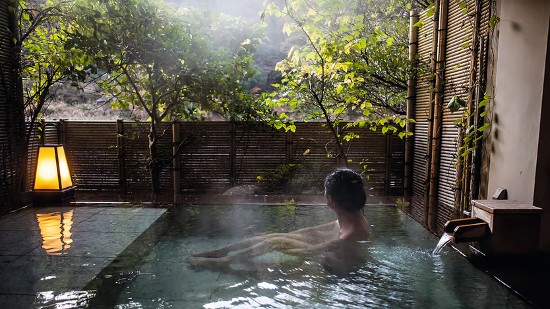In May, The Economist published an article entitled, “Japan’s hot-spring resorts are blocking geothermal energy plants.” It appears that the Japanese people like to bathe in reservoirs fed by natural hot springs and don’t want utilities messing them up by tapping into them to generate electricity.
Japan sits on the Ring of Fire that encircles the Pacific Ocean. With more than 100 active volcanoes, its geothermal energy potential is estimated to be 23 Gigawatts, or the equivalent of 23, 1-gigawatt nuclear power plants. But despite this potential, only 0.3% of the electricity generated in Japan comes from geothermal sources. This untapped potential seems weird when you consider that Japan has limited fossil fuel resources to burn in thermal power plants, and since Fukushima, has expressed a wariness about future nuclear power plant builds.
But according to Project Drawdown, a site whose mission is to help the world stop climate change by promoting science-based climate solutions and strategies, unlike in Japan, geothermal is starting to heat up.
What Do We Mean When Talking About Geothermal Energy?
Geothermal energy takes advantage of the interior heat of our planet by tapping into it. Geothermal power plants come in various flavours including natural and human-enhanced systems such as:
- Dry steam natural power plants that use steam directly from underground sources to spin turbines to generate electricity.
- Flash steam that uses closed hot water cycling systems to produce steam to spin turbines. The steam then gets condensed back into water and is injected underground to be used again.
- Binary cycle that transfers heat from underground hot water using heat exchange mediums to heat another liquid that is turned into steam to spin turbines.
- Enhanced geothermal energy involves creating engineered underground reservoirs to tap into the underground heat to generate energy.
All of the above involves going deep into the ground where temperatures can vary from just above the boiling point of water at 100 Celsius (212 Fahrenheit) to as high as 370 Celsius (700 Fahrenheit).
But other forms of geothermal energy directly tap into much shallower sources to provide direct heating of buildings, greenhouses and other facilities. These include home geothermal heat pump systems that leverage heat from the ground tapped at depths as little as one metre (3.3 feet) to 100 metres (330 feet) or more and employ closed and open loop heat exchange systems.
What is Stopping Utilities From Tapping Into the Earth’s Heat?
Geothermal as a renewable energy source is not intermittent like solar and wind. It operates continuously.
Geothermal is clean. Compared to wind and solar, its footprint on the land is small.
Geothermal power plants have long operational lives. Even geothermal heat pumps used in homes and buildings have a longer lifespan than conventional heating and cooling systems.
The energy source that geothermal taps into will last billions of years with a mere 0.1% of the total heat potential generated by the planet needed to meet global energy demand for millions of years into the future.
What are the Challenges to Geothermal Systems?
Risks include the need to drill. These are the same as those faced by the fossil fuel industry when exploring for oil and natural gas. But unlike in the search for oil and gas reservoirs, finding hot water or hot rocks is a lot easier.
And as in the search for fossil fuels, there are environmental impact risks. Finding hot water could also mean bringing contaminants to the surface such as arsenic, boron, fluoride and dissolved toxins. Drilling could also tap into sour gas (hydrogen sulphide) or other gasses that could be released into the atmosphere and contribute to warming.
Not all geothermal sites are the same. Some sources can initially produce high heat values and then over time see temperatures drop. Others can experience corrosion caused by closed-cycle reinjection.
Then there is the regulatory environment and public resistance. Government policy is still behind the times when it comes to understanding what’s involved with geothermal energy. Considering the Japanese public’s concern that this form of energy could impact natural warm springs, the industry needs to become better at communication.
















